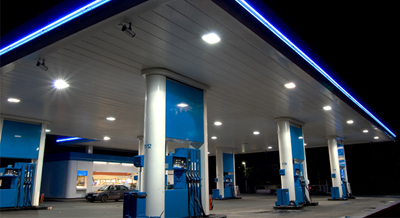The national average for a gallon of gas awoke from a months-long slumber, surging 13 cents since July 20 to $3.71 as of July 27. The primary cause appears to be the oil price, which has marched nearly $4 higher in the past few days to hover near $80 per barrel. As oil accounts for almost 50% of the cost of a gallon of gas, higher oil prices usually mean higher pump prices.
“Gas demand, meaning people fueling up, remains tepid. It’s lower now than at this time last year and in 2021,” said Andrew Gross, AAA spokesperson. “But while the heat may be keeping some folks home, it also suppresses refinery production, according to experts. Constrained supplies and a higher cost of oil are tipping the balance toward rising pump prices for now.”
According to new data from the Energy Information Administration (EIA), gas demand rose slightly from 8.86 to 8.94 million b/d over the same week. Meanwhile, total domestic gasoline stocks dipped from 218.4 to 217.6 million bbl. With supplies tight, if demand should spike, pump prices will follow suit.
The July 27 national average of $3.71 is 15 cents more than a month ago but 59 cents less than a year ago.
Since July 20, these 10 states have seen the largest increases in their averages: Indiana (+23 cents), Iowa (+20 cents), Florida (+20 cents), Ohio (+19 cents), Georgia (+19 cents), Kansas (+18 cents), Tennessee (+18 cents), Texas (+18 cents), North Carolina (+18 cents) and South Carolina (+18 cents).
The nation’s top 10 most expensive markets: California ($4.93), Washington ($4.93), Hawaii ($4.69), Oregon ($4.59), Alaska ($4.31), Nevada ($4.24), Utah ($3.94), Idaho ($3.89), Illinois ($3.95) and Colorado ($3.92).
Source: AAA










